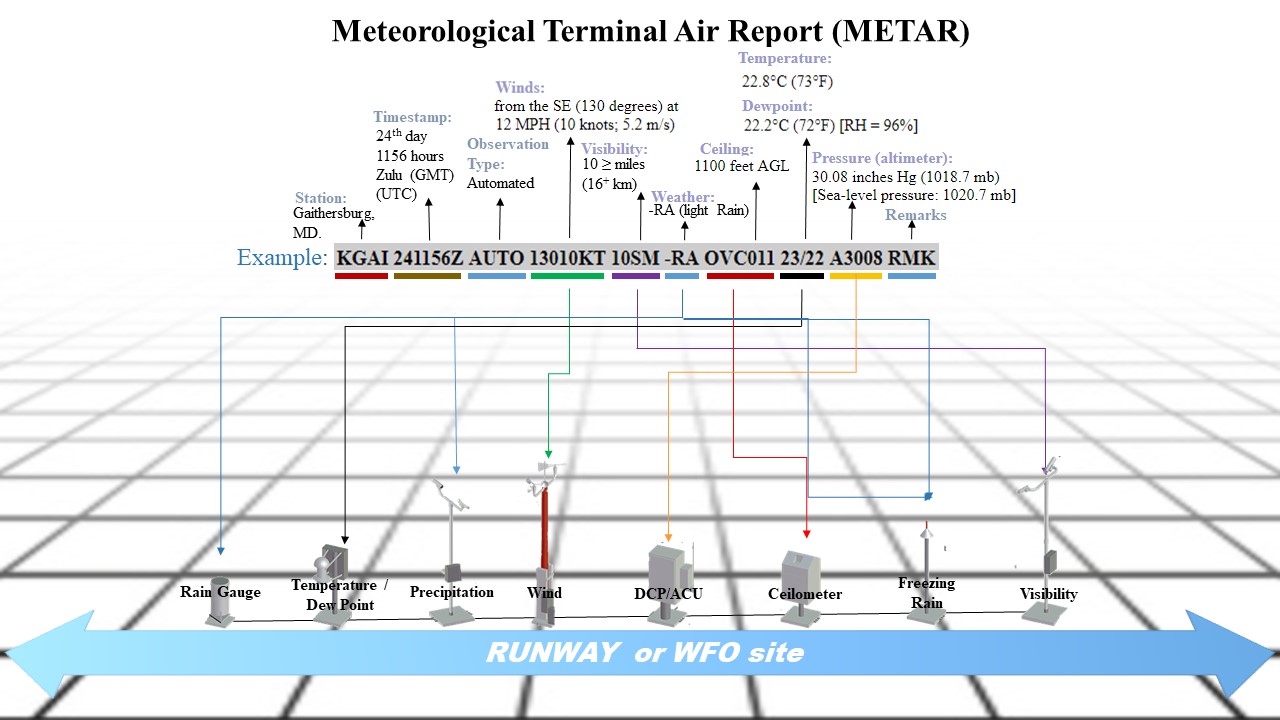|
|

Problems with ASOS?
Use the form below to submit your issue report with your ASOS.
Click Here To Access ASOS Form
ASOS Map
Below you will find the ASOS Map of all sites, that includes different information on each site.
The Automated Surface Observing Systems (ASOS), a collaborative effort by the NWS, FAA, and DOD, serves as the primary surface weather network in the United States. It plays a crucial role in aviation safety at various airports and supports meteorological, hydrological, and climatological research. ASOS provides essential weather data to over a thousand locations, ensuring the safe management of air traffic for both civilian and military operations. Without ASOS observations, flight operations could be delayed, air traffic might be unable to land or take off, and subsequent effects could prevent passengers and cargo from reaching their destinations on schedule, leading to economic repercussions. Surface weather observation is indispensable for day-to-day operations at these locations.
-
ASOS operates around the clock, updating observations every minute, 24/7, all year long. The aviation community’s top priority is safety, and weather conditions can pose serious threats.
-
By providing critical aviation weather parameters directly at airport runway touchdown zones, ASOS ensures that the information is available where it matters most.
-
ASOS detects significant meteorological changes and issues hourly and special observations whenever weather criteria thresholds are met.
-
Additionally, ASOS automatically provides computer-generated voice observations to aircraft in the vicinity via FAA ground-to-air radio frequencies.”
-
These messages are also accessible through a telephone dial-in line. ASOS observes, formats, archives, and transmits observations automatically, issuing special reports when conditions exceed the weather element criteria outlined in FAA JO 7900.5E.
|
|
| |
ASOS Reports the Following Basic Weather Elements:
-
Sky condition: cloud height and amount (clear, scattered, broken, overcast) up to 12,000 feet.
-
Prevailing Visibility and obstructions to vision from zero to 10 miles.
-
Present weather information: type and intensity for rain, snow, and freezing rain.
-
Pressure: sea-level pressure, altimeter setting.
-
Ambient air temperature, dew point temperature.
-
Wind: direction, speed and character (gusts, squalls).
-
Precipitation accumulation, both liquid and frozen water equivalent.
-
Select significant remarks appended to the end of the observation that include variable cloud height, variable visibility, precipitation beginning/ending times, rapid pressure changes, pressure change tendency, wind shift, and peak wind.
|